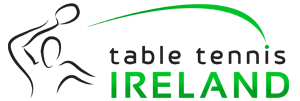A functional classification system was put in place to minimise the impact of the impairment on the sport performance, providing structure for a fair and equitable competition.
Its aims are to determine who is eligible to compete in Para Table Tennis, and to divide the eligible players into different categories called classes according to the level of activity limitation. Therefore, a sport class does not necessarily only comprise one impairment type but can include athletes with different impairments.
There are two impairment groups considered eligible for Para Table Tennis, physical and intellectual.
Classes are divided as follows:
Athletes with a physical impairment: Classes 1-5 (wheelchair players),
Classes 6-10 (ambulant players)
Athletes with an intellectual impairment or autism: Class 11
Physical Impairment
The following are the physical impairments considered eligible for Para Table Tennis
| Impairment Type | Description | Eg of health conditions that may lead to the impairment |
| Impaired muscle power | Reduced force generated by the contraction of a muscle or muscle groups | Cerebral palsy, traumatic brain injury, stroke, multiple sclerosis |
| Impaired passive range of movement | Restriction or a lack of passive movement in one or more joints | Arthrogryposis, contracture from chronic joint immobilisation |
| Limb deficiency | Total or partial absence of bones or joints as a consequence of trauma, illness or congenital | Traumatic amputation, amputation due to bone cancer, dysmelia |
| Hypertonia | Increase in muscle tension and a reduced ability of a muscle to stretch caused by damage to central nervous system | Cerebral palsy, traumatic brain injury, stroke, multiple sclerosis |
| Athetosis | Continual slow involuntary movements | |
| Ataxia | Uncoordinated movements caused by damage to the central nervous system | |
| Leg length difference | Difference in the length of the legs as a result of a disturbance of limb growth, or as a result of trauma | As a result of dysgenesis or trauma |
| Short stature | Reduced length in the bones of the upper limbs, lower limbs and/or trunk | Achondroplasia, growth hormone dysfunction |
Intellectual Impairment and Autism
Players with an intellectual impairment or autism have a restriction in intellectual functioning, communications and adaptive behavior that affects conceptual, social, and practical adaptive skills required for everyday life. This impairment must be present before the age of 18
How to apply for classification
Not everyone needs classification. To find out if you are in the right stage of your sport career to be nationally classified, and to how to apply for it, please click here.
